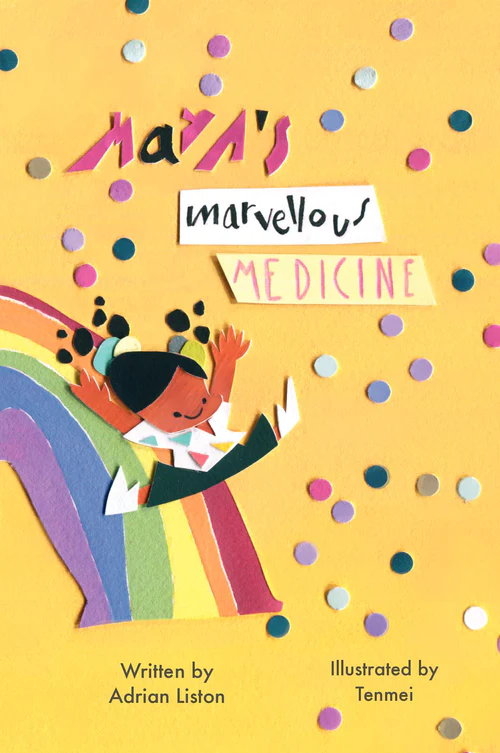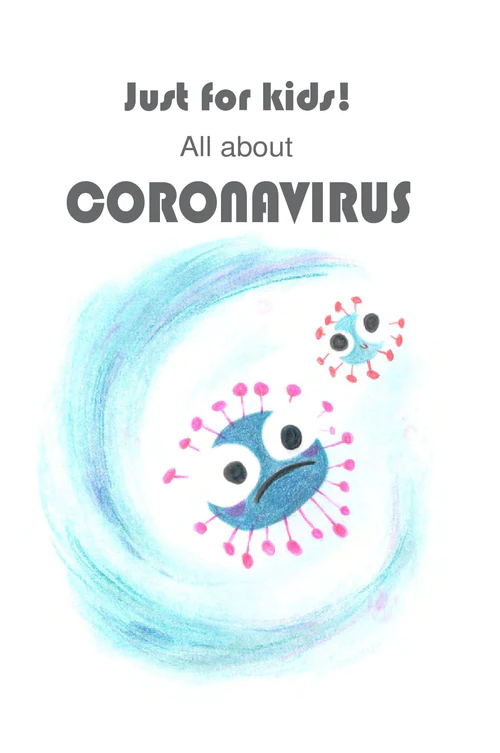Meet the nextGEN: James Dooley
 Monday, September 30, 2024 at 11:35AM
Monday, September 30, 2024 at 11:35AM An interview with LifeScience.org
Who or what called you to lead?
My journey into leadership started with a deep-rooted desire to care for others, a calling that was shaped by my childhood experiences. Growing up in foster care, I spent a lot of time with my grandmother, who was a kind and caring person. She didn't just take care of me—she took care of everyone around her. Watching her selflessness made me realise early on that I wanted to follow in her footsteps and help people.
At 15, I ran away from home and started working in healthcare. My first jobs were in hospitals and nursing homes, and by my early 20s, I decided to go back to school to become either a paramedic or physician. However, my path took a major turn after I was in a serious car accident, which left me in rehab for two years. The physical toll it took on me made me question whether I could handle the intensity of working in the ER, something my mentor—who had become a close friend—strongly advised me to reconsider.
After another accident in the ER, I realized that my body simply couldn’t endure the demands of the job. So, I shifted my focus to research, with the help of that same mentor who pointed me towards a biotech research program. I was working in immunology at the time, but it wasn’t long before neurology caught my attention. Years later, I crossed into that field after meeting my co-founder, Adrian Liston, when he set up his lab in Belgium.
Adrian’s brother tragically passed away from a traumatic brain injury (TBI), which deeply impacted both of us. That loss shifted our focus toward the huge unmet need for TBI treatments. We started applying the immunological research I had been working on toward neurological solutions, and what we discovered was promising. In transgenic animals, we were able to get effective immune responses in the brain. From there, we realised that with gene therapy, we might be able to translate these findings to humans and potentially save the lives of TBI patients in those critical early stages.
When Adrian moved the lab to the UK, we founded our company and have been dedicated ever since to making this a reality. As a leader, I’m driven by the desire to fill the gaps in healthcare, especially for conditions like TBI, where treatments are sorely lacking. My goal is to translate cutting-edge research into therapies that make a real difference for patients and their families.
 science careers
science careers Graphic novel shows unconventional routes into science
 Sunday, September 29, 2024 at 1:39PM
Sunday, September 29, 2024 at 1:39PM Stories of people's unconventional routes to becoming scientists are told in a new graphic novel intended to encourage others into the field.
The book - Becoming a Scientist - is aimed at young adult readers and was written by the University of Cambridge's Prof Adrian Liston, and illustrated by Yulia Lapko - a business administrator for the pathology department.
Both their routes could be deemed unconventional as Prof Liston was expected to join his truck-driving family's business in Australia, while Ms Lapko fled her native Ukraine in 2022 following invasion.
Prof Liston said as a youngster he did not even know what a scientist was, and hoped the stories showed the "many different pathways".
The novel told the stories of 12 members of the Liston-Dooley lab, who researched the immune system and tissues during pathology.
This was not Prof Liston's first book and he has written books for young children including All about Coronavirus, Battle Robots of the Blood and Maya’s Marvellous Medicine.
His graphic novel, however, was aimed at older readers between 12 and 18 years of age.
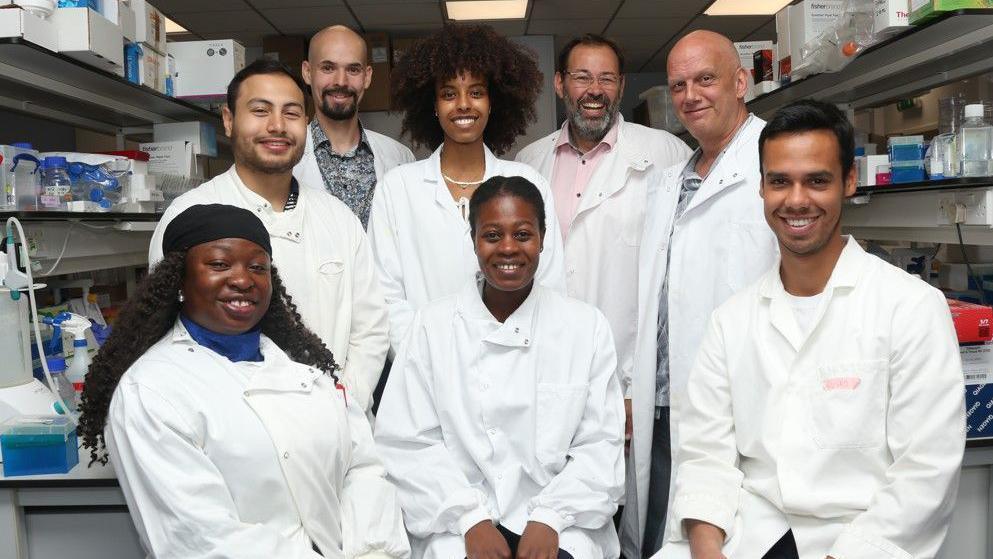
Stories about how the team members came to work in science are told in the graphic novel
"It was really luck more than anything else that allowed me to fall into the career I have today," Prof Liston said.
"When I looked around the amazing people in my lab, I realised that everyone had a story about overcoming barriers to enter science."
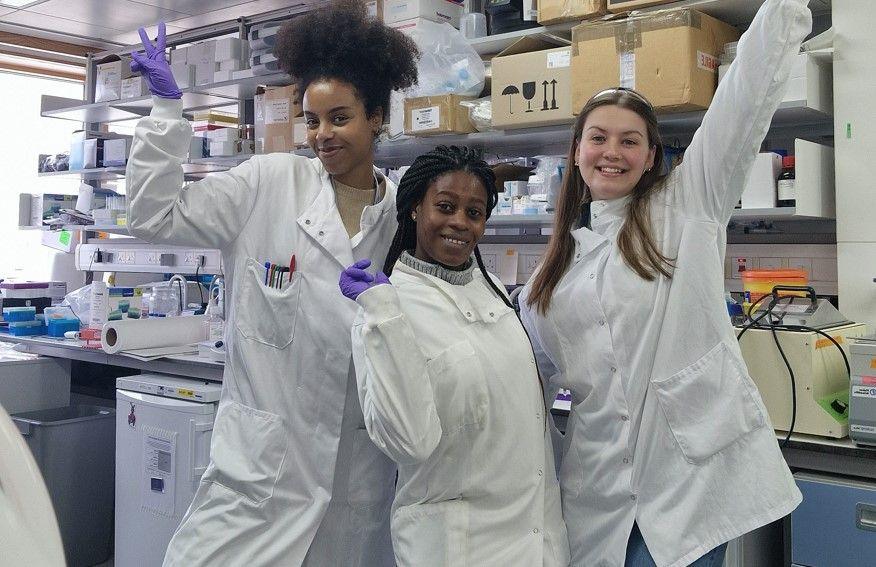
Magda Ali, Ntombizodwa Makuyana and Amy Dashwood became models for the cover of the book
Prof Liston freely admits he was not brought up to be a scientist.
In the book, he said: "I grew up in a truck-driving family in Australia.
"My parents didn't get the chance to finish high school and the only jobs I heard about were driving trucks or working the factory line building cars."
He added: "I never met a scientist. Actually, if I hadn't been inspired by the weekly nature documentary on TV I'd never have known being a scientist was possible."
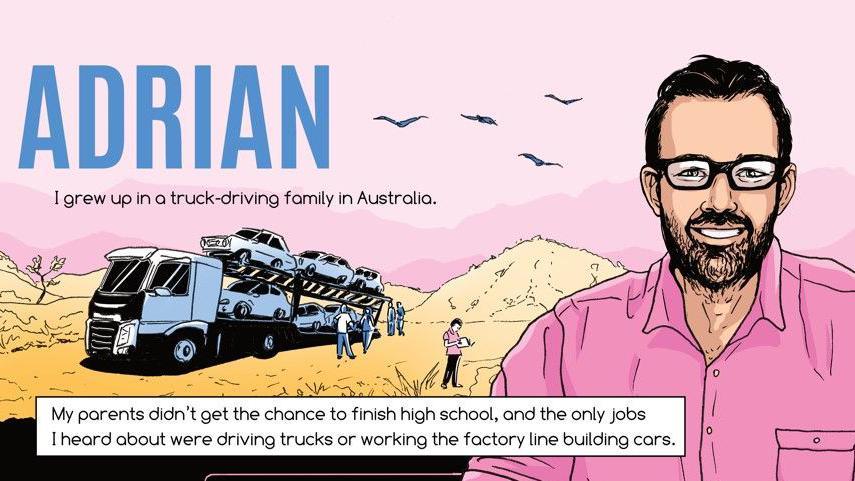
Adrian Liston was inspired to follow a scientific education after watching nature programmes on television
Studying at university was "an epiphany for me", the professor said.
"Sure, there was class snobbery, but I was also able to find my group who were weird like me."
He told the BBC: "I want to see more kids with grit and creativity really look seriously at science as a potential career, and I realised that my team here at Cambridge really demonstrated just how diverse scientists are in practice.
"Every one had their own story of adversity conquered, their own role-models and their own motivations, so I thought we could simply tell their stories.
"While each one is unique, together they do show that science can be for anybody, and science becomes richer for having a diversity of talents."
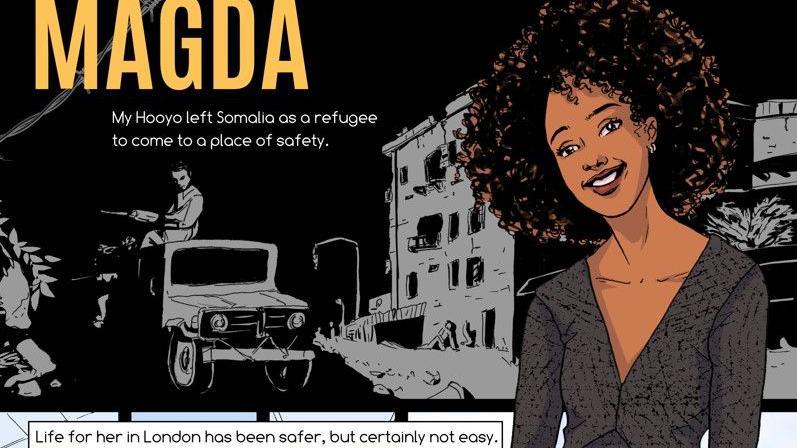
Magda Ali pursued her education because she dreamt of becoming a scientist
Other stories included those of Magda Ali, who is completing her PhD at Cambridge University. Her parents came to the UK as refugees from Somalia and although she attended a school where few students even took A-levels, she continued her studies and her dream of becoming a scientist.
Visiting student researcher Alvaro Hernandez said he failed his school entrance tests in Peru at the age of five and almost did not get an education at all, having been preoccupied instead with football.
"I think my early teachers would be surprised to see me in Cambridge," he said in the book.
Their diverse stories have been illustrated by Yulia Lapko, who came to the UK under the Homes for Ukraine scheme.
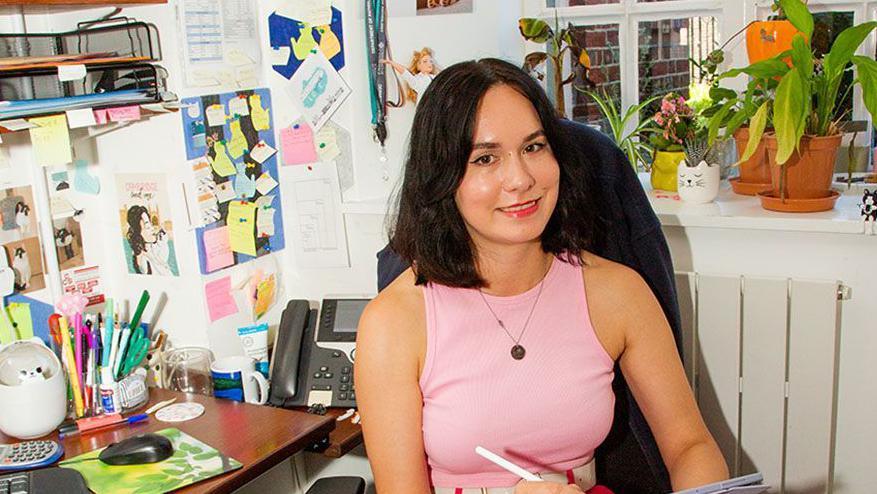
Yulia Lapko came to the UK after her native Ukraine was invaded by Russia
She had been working as an artist before the war, but on arriving in Cambridge, and added: "I took a break from that because, settling in the new country, it made sense to get a full-time job for a sense of security and stability. Now that I feel settled enough I can expand the possibilities of what I can do with my skills.
"I really enjoy being here, I love the department and its people.
"Drawing people is my main speciality in art, and all the people featured in the book I actually see every day, which made it easier to capture them in a way that feels alive and effortless.
"But it’s one thing to see what people look like and the other is to really see them, to know the story behind each individual, so having all of them share their backgrounds, hopes and wishes really helped to get the whole picture of each character."
Prof Liston added: "It is guts and heart rather than brains that lead to scientific breakthroughs, and every discovery worth making happens from a team."
Read the book for free online or order a print copy.
Designer IL2 mutations for clinical use
 Wednesday, September 4, 2024 at 7:40PM
Wednesday, September 4, 2024 at 7:40PM We have a new pre-print out, on novel designer IL2 mutations!
IL2 is a powerful immunomodulator, but the dual roles make it complex to use, and many designer mutations reduce bioactivity or result in poor production. This makes it much harder to move these muteins to the clinic.
Rob van der Kant, Joost Schymkowitz and Frederic Rousseau from the VIB Switch lab took up the challenge of designing new IL2 mutants that not only improve the specificity for Tregs or CD8 T cells, but also maintain bioactivity and actually improve production capacity. They sent the designs over to us to test!

Great work from Amy Dashwood screened these mutations designs in vitro, with in vivo testing by Ntombizodwa Makuyana resulting in a set of mouse and human IL2 muteins with the desired biological properties. In particular we solve some of the common issues with IL2 muteins by considering the bound and unbound structures. For example, to make IL2 specific for Tregs, the approach is to allow binding to IL2RA, the high affinity receptor sub-unit used by Tregs, while block binding to the IL2RB used by CD8 T cells. The problem is that Tregs also need the full IL2RA-IL2RB-IL2RG trimer to assemble for optimal signal. So the typical Treg mutein is more specific, but also has poorer bioactivity. We solved this by creating a block between IL2 and IL2RB that moves out of the way after IL2 binds IL2RA, allowing the full trimer to form. These muteins are not only superior to the original IL2 in terms of cellular specificity, but by removing the aggregation-prone regions. By identifiying the aggregation gateway residues and changing them to be aggregation-resistant, we can further improve these muteins by making them aggregation resistance. The net effect is that the IL2 muteins we made are more specific for either Tregs or CD8 T cells, and will also be cheaper and easier to produce - the perfect combo for biologic drugs!
Our take-home message: if you are engineering proteins for therapeutic use, remember to take into account production, aggregation and bioactivity. These factors count when it comes to making a drug!
Take a look at the full paper on BioRxiv.
 Liston lab,
Liston lab,  immunology
immunology Crafting Science Stories for Young Audiences
 Monday, September 2, 2024 at 10:52AM
Monday, September 2, 2024 at 10:52AM
In his laboratory at the University of Cambridge, immunologist Adrian Liston studies the complex inner workings of the immune system with a focus on regulatory T cells that help keep the body’s immune response in check. But beyond the bench, he whittles down the jargon-filled, methodical, and nuanced research and transforms it into digestible nuggets of scientific communication for young audiences.
“Kids are naturally curious about how the world works,” said Liston. “They will quite happily learn about how anything works so I don't think there are topics that are out of bounds in terms of science.”
Liston’s own journey into science communication for children and teenagers is inspired and influenced by his personal experience. “As [my son] has developed, I've developed as a father, and I've used what I've learned as a dad to keep pace in my public communication efforts,” said Liston. From children’s books to a computer game to a graphic novel, Liston has altered the medium, language, and message to evolve with the next generation’s shifting interests.
Drop the Jargon, Focus on the Message
As a young child, when Liston’s son asked him about his work, Liston, “learned to talk in his language.” Scientists spend decades learning a precise language, chock full of scientific terminology and tongue-twisting acronyms, that allows them to succinctly and accurately communicate their findings to peers. But when it comes to communicating research to nonspecialists, regardless of age, Liston finds it important to keep it high level.
“Sometimes people get so hooked on trying to communicate the details that the concept doesn't come across.” Liston cuts out the jargon to spin a narrative that is accessible and resonates with the intended audience.
When writing books for young children, Liston targets two diverse audience categories. “The ideal situation of a kid's book is when you're hitting the kids at one level, and the parents at another level.”
That’s why in his book Battle Robots of the Blood, he narrated the story from the perspective of Tim, a seven-year-old boy who has a primary immunodeficiency that renders him incapable of receiving life-saving vaccines.2 Frequent trips to the hospital are a part of his life, but wrapped up in the innocence of youth, Tim is preoccupied with spending time with his friends. However, this activity carries considerable risk for him, especially when his friends are unvaccinated.
The message to children is simple and clear: not everyone has a functioning immune system, so others need to get the vaccines that help to train the cool battle robots in the blood that fight against dangerous viruses. The message to the individual reading the book—often a parent or guardian—is also straightforward: getting their child vaccinated not only protects them, but it contributes to a herd immunity that helps save the lives of children who are unable to receive this marvelous medicine.
Evolving the Medium to Match and Expand the Audience
As his son grew up, Liston saw an opportunity to learn about communicating with a new audience: teenagers. “I saw how engaged and focused he could be on computer games,” said Liston. “He could absorb information so well through that medium.” This inspired Liston to attempt science communication using video games. He teamed up with computer programmers to create Virus Fighter, a game that teaches people about the science of virology and the impact of vaccinations.
Players can choose to infect a population with one of four viruses—coronavirus, influenza, measles, or Ebola—and adjust settings that affect the virus's lethality, virulence, and incubation time to see how these properties influence viral spread. By introducing countermeasures, such as vaccinations, quarantines, and social distancing, the player can track how tweaks to these responses impact outbreaks, the health system, and the economy. Depending on the selected mode and settings, the game reveals different lessons. For example, Liston noted, “It's not just about how lethal a virus is, it's about how fast it spreads.”
Science is Open to All
Throughout his career, Liston has been motivated by the inequities that exist in science and its communication. Growing up in a working-class neighborhood in Australia, Liston never had an opportunity to meet a scientist. “Science was something that was occasionally on the TV, but it wasn't something that I was ever able to encounter,” said Liston.
As his son entered high school, Liston embarked on a new project targeted at teenagers. Using comic art as his medium, Liston imparted a message that is near and dear to him: science is for everyone. “This project is not really about science, it's about being a scientist,” said Liston. His latest book, Becoming a Scientist: The Graphic Novel, includes 12 vignettes that highlight the varied backgrounds, role models, and motivations of scientists in his research team. Although everyone has a different story, they share a resilience, determination, and a sense of wonder that fuels their journey through science.
An abiding philosophy that shapes Liston’s day to day is that science is for everyone. “If science is for everyone, then science communication has to be for everyone,” said Liston. The more stories that get told, the broader the population that gets served. “No matter how good someone is at science communication, they can't do it for everyone, because different segments of the population are going to resonate with different messages and with different messengers,” said Liston.
To bring these important scientific messages and ideas to life, Liston collaborated with the artists Sonia Agüera-González and Yulia Lapko, software developers, and members of his research team—a reminder that good communication, like successful science, often results from the coming together of people with diverse backgrounds, skills, and views.
Becoming a scientist
 Thursday, August 22, 2024 at 11:36AM
Thursday, August 22, 2024 at 11:36AM A Fellow of St Catharine’s has produced a new graphic novel to encourage high school students from all backgrounds to pursue STEM subjects (science, technology, engineering and mathematics). Professor Adrian Liston (2023) has joined forces with illustrator Yulia Lapko on Becoming a Scientist: The Graphic Novel to tell the story of the twelve scientists in his biomedical research laboratory at the University of Cambridge.
Professor Liston explained, “Growing up, I didn't know what a career in science was. It was really luck more than anything else that allowed me to fall into the career I have today. When I looked around the amazing people in my lab, I realised that everyone had a story about overcoming barriers to enter science. While everyone's story is unique, what they have in common is inspiring – there are so many different pathways to success in science. I wrote this book to share these outstanding role-models with high school students, so they can find a story that resonates with them, and use that inspiration to go into STEM subjects.”
Cover of the Becoming a Scientist graphic novel by Prof. Adrian Liston with illustrator Yulia Lapko
Originally from Australia, Professor Liston is now Professor of Pathology at the University of Cambridge, a where he leads a team of researchers looking at the pathologies of the immune system. The idea for a graphic novel came about after Professor Liston’s group spent time at St Catharine’s for a team-building session, which invited each scientist to speak about their backgrounds, role models and motivations. With the group’s support, the new graphic novel devotes a section to each team-member’s story, with eye-catching illustrations provided by Yulia. Read the graphic novel online.

Detail about Prof. Liston's story from the Becoming a Scientist graphic novel
Yulia is an artist from Kyiv, Ukraine. She balances her art career with her day job as Business Administrator for Cambridge’s Department of Pathology.
She said, “I might not be a scientist, but I can relate to the idea that everyone has the potential to become anyone they want to be. Our paths might be very different, and some of them are longer and tougher than others, but the key thing is motivation. Relatable role models help nurture our potential, and I am excited that our book offers twelve role models to inspire young people.”
Becoming a Scientist is Professor Liston’s first publication for a young adult audience (readers between 12 and 18 years of age). He has previously written All about Coronavirus, Battle Robots of the Blood and Maya’s Marvellous Medicine for children between 3 and 8 years old, all illustrated by Dr Sonia Agüera González (also known as Tenmei).
Professor Liston added, “Some readers might associate graphic novels with fiction like Neil Gaiman’s The Sandman or Alan Moore and David Lloyd’s collaboration on V for Vendetta, but there is a rich tradition of creative biographical works such as Marjane Satrapi’s memoir, Perspolis, or Art Spiegelman’s interviews with his father in Maus.
“I am privileged to go to work every day with such a talented group of people and it has been an honour to tell the different stories that brought us all together in Cambridge. I hope these diverse experiences connect with and inspire the next generation of scientists.”

Some of the scientists featured in the graphic novel with Prof Liston (centre top row) in their lab (credit: Natalie Sloan-Glasberg)
The graphic novel is also available in print from https://www.thegreatbritishbookshop.co.uk/products/becoming-a-scientist
Becoming a Scientist - out now!
 Wednesday, August 21, 2024 at 1:40PM
Wednesday, August 21, 2024 at 1:40PM Becoming a Scientist: The Graphic Novel is now available in print edition!
Lab Gantt chart
 Saturday, August 3, 2024 at 7:39PM
Saturday, August 3, 2024 at 7:39PM Our lab Gantt chart, modelled by current undergraduate interns Ray Yan and Preesha Jain! It covers 185 lab members, based in VIB and KU Leuven in Belgium, and the Babraham Institute and University of Cambridge in the UK. An average of 14 team members joining annually in Belgium (largely because of the fantastic Erasmus program allowing mobility across Europe!) and 8 team members joining annually in the UK. Median duration of 12 month stay in Belgium (with Masters students being the median lab member) and 18 month stay in the UK (with PhD students being the median lab member, but none yet to graduate!). A whole lot of memories and nostalgia in this picture!
 Liston lab
Liston lab 

